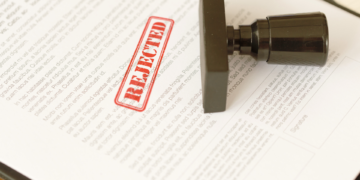Writing a research paper that gets published is a challenging yet rewarding endeavor. It requires more than just presenting your research findings; it involves crafting a well-structured, compelling narrative that resonates with editors and peer reviewers. Here are the top 5 strategies to help you write research papers that get published in high-impact journals.
1. Choose the Right Topic and Journal
Selecting an appropriate research topic and target journal is the first crucial step in ensuring your paper gets published.
1.1 Identify a Relevant and Impactful Topic
- Current Trends: Stay updated with the latest trends in your field. Choose a topic that addresses current issues or gaps in the literature.
- Significance: Ensure your research question is significant and has the potential to contribute new knowledge or insights to your field.
1.2 Target the Right Journal
- Journal Scope: Select a journal whose scope aligns with your research topic. Read the journal’s mission statement and recent publications to gauge its focus.
- Impact Factor: Consider the journal’s impact factor and reputation in your field. High-impact journals often have stringent acceptance criteria but offer greater visibility for your work.
1.3 Study the Journal’s Requirements
- Submission Guidelines: Carefully read and follow the journal’s submission guidelines regarding formatting, structure, and referencing.
- Previous Issues: Review recent issues of the journal to understand the type and quality of papers they publish.
2. Develop a Clear and Compelling Structure
A well-structured paper enhances readability and helps convey your research findings effectively.
2.1 Craft a Strong Abstract
- Concise Summary: Write a concise abstract that summarizes the key aspects of your research, including the problem, methodology, results, and implications.
- Keywords: Include relevant keywords to enhance discoverability and attract the right audience.
2.2 Organize Your Paper Logically
- Introduction: Clearly state the research problem, its significance, and your objectives. Provide a brief overview of the existing literature and highlight the gap your research addresses.
- Methods: Describe your research design, data collection, and analysis methods in detail. Ensure reproducibility by providing enough information for others to replicate your study.
- Results: Present your findings clearly and logically. Use tables, figures, and charts to illustrate key points and enhance understanding.
- Discussion: Interpret your results in the context of the existing literature. Discuss the implications, limitations, and potential future research directions.
- Conclusion: Summarize the main findings and their significance. Reinforce the contribution of your research to the field.
2.3 Use Clear and Precise Language
- Avoid Jargon: Write in plain language that is accessible to a broad audience, avoiding unnecessary jargon and technical terms.
- Proofreading: Proofread your paper multiple times to eliminate grammatical errors and improve clarity. Consider professional editing services for a final review.
3. Conduct a Thorough Literature Review
A comprehensive literature review demonstrates your understanding of the field and positions your research within the existing body of knowledge.
3.1 Identify Key Sources
- Relevant Studies: Identify and cite the most relevant studies related to your research question. Highlight how your work builds on or diverges from these studies.
- Current Research: Ensure your references include recent publications to show that you are up-to-date with the latest developments in your field.
3.2 Critically Analyze the Literature
- Evaluate Sources: Critically evaluate the strengths and weaknesses of previous studies. Discuss how your research addresses the limitations or gaps identified in the literature.
- Synthesize Information: Synthesize the information from multiple sources to provide a comprehensive overview of the current state of research.
3.3 Highlight Your Contribution
- Unique Perspective: Clearly articulate what is novel or unique about your research. Emphasize the contribution your study makes to advancing knowledge in your field.
4. Ensure Rigor and Ethical Standards
Maintaining high standards of rigor and ethics is essential for producing credible and trustworthy research.
4.1 Robust Methodology
- Detailed Methods: Provide a detailed description of your research methods, including data collection and analysis techniques. Ensure that your methodology is appropriate for addressing your research question.
- Reproducibility: Include sufficient details to enable other researchers to replicate your study. Transparency in your methods enhances the credibility of your findings.
4.2 Ethical Considerations
- Ethical Approval: Obtain ethical approval from relevant institutional review boards (IRBs) or ethics committees, particularly for studies involving human or animal subjects.
- Informed Consent: Ensure that participants have given informed consent and that their privacy and confidentiality are protected.
4.3 Data Integrity
- Accurate Reporting: Report your data accurately and transparently. Avoid any manipulation or selective reporting of results.
- Data Sharing: Consider sharing your data with the research community to enhance transparency and facilitate further research.
5. Engage with the Peer Review Process
Navigating the peer review process effectively can significantly improve your paper and increase your chances of publication.
5.1 Prepare for Peer Review
- Reviewer Suggestions: Many journals allow authors to suggest potential reviewers. Choose experts in your field who can provide valuable feedback.
- Conflict of Interest: Avoid suggesting reviewers with whom you have a personal or professional conflict of interest.
5.2 Respond to Reviewer Comments Professionally
- Constructive Feedback: View reviewer comments as an opportunity to improve your paper. Respond to each comment thoughtfully and professionally.
- Detailed Responses: Provide detailed responses to each point raised by reviewers. Include page numbers and specific references to where changes were made in the manuscript.
5.3 Revise and Resubmit
- Incorporate Feedback: Carefully consider and incorporate feedback from reviewers to strengthen your paper.
- Resubmission Letter: When resubmitting, include a detailed letter explaining how you addressed each of the reviewers’ comments.
Conclusion
Writing research papers that get published in high-impact journals requires strategic planning, meticulous attention to detail, and perseverance. By choosing the right topic and journal, developing a clear and compelling structure, conducting a thorough literature review, ensuring rigor and ethical standards, and engaging effectively with the peer review process, you can enhance your chances of success. Stay diligent, seek feedback, and continuously improve your work to achieve your publication goals.






































